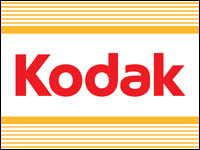The daily barrage of e-commerce developments can make one dizzy, as the entire developed world embraces the Internet at a fever pitch.
It’s seeping into all aspects of our lives. First our shopping went online. Then our stock portfolios. Now it has entered our homes, sneaking into our appliances and our food.
But what does it all mean? Does e-commerce and the Internet improve our lives, or does it simply jazz it up?
Let’s see.
Home Away From Home
Europe’s first fully networked Internet home recently went on sale in Watford, just outside of London. The asking price: $825,000 (US$).
You can turn on the coffee without going to the kitchen. You can notch down the heat and start the sprinklers half-a-world away, over the Internet.
The Internet home is built by Laing Homes, and networked by Cisco Systems. “You can run the entire house both from within and from anywhere in the world,” said Colin Pratt of Laing Homes. “You can download programs from the computers or you can water the garden while you’re on holiday in Spain.”
The home has 72 power points, 72 cables, four computers, four ISDN lines and four Webcams, all of which enables residents to view rooms in the house on the Internet. The networked house can be run online or by using a portable, book-sized computer that serves as a remote control.
Although this model may seem to be the home of the future, Cisco Systems stressed that all of the devices used in the home are currently on the market. “This isn’t a home of the future; it’s a home of today simply exploiting the benefits of Internet technology,” said Bill Nuti, president of Cisco Systems in Europe, Middle East and Africa.
Home Grocery Delivery Is Coming to Your Town
On another virtual front, HomeGrocer.com just raised $100 million to add 20 new markets to make it easier to walk the supermarket aisles from the desktop. Competitor Webvan will soon launch its IPO, hoping to raise a cool $1 billion to build warehouses and buy vans nationally for its online grocery business.
Both services run their operations from warehouses rather than working with brick-and-mortar grocery chains. With the service, you choose your groceries online and they appear at your door within four hours. You get to choose a half-hour target in the four-hour window. The vans, of course, keep the ice cream cold.
Restaurant Delivery Beginning To Show Up
And if it’s just too much work to pop the Internet-delivered frozen meal into the microwave, your choices for dinner delivery online are growing. QuikOrder.com has tested Internet ordering of Domino’s Pizza. The system is now being offered to Domino’s franchises nationally.
With the QuikOrder.com system, the customer establishes a user account. Then the system remembers the customer’s payment option and can post previous orders. “Remember that one I got last Friday?” Yep, the computer knows. The order process comes in at a trim 30 seconds.
Another match between customer-service experts and chefs comes with Gazelle Systems’ partnership with Food.com. The system hurries up Web take-out and delivery. Gazelle software takes the order directly to the kitchen, skipping the busy and tech-flustered host.
Better Or Different?
So that’s one day’s news. Are we better off?
Of course we are.
The bottom line is that we could live without these innovations, but why should we? We could also live without the printing press, light bulbs and television.
The efficiencies appeal to me. I like going to the grocery store about one out of every four times I go. The rest of the time, I’ll call the van. The beauty of technology is that it offers options.
If you feel that the Internet and e-commerce is just a dressed up bag of tricks at a second-rate sideshow, so be it. I understand.
Feel free to sit by candlelight and read books written on parchment with a quill pen.











































Social Media
See all Social Media